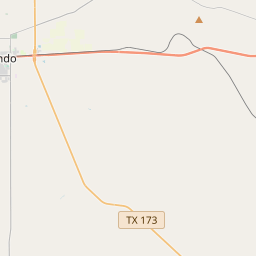Zion Evangelical Lutheran Church






Many of the German settlers who arrived here in the 1840s were Lutherans who kept their religious traditions by meeting for worship in their homes. The Rev. Christian Oefinger sailed from Bremen, Germany, arriving in Galveston. From there he made his way to Castroville. Zion Evangelical Lutheran Church was organized on January 29, 1852, with 12 charter members, their families and other organizers, most from Castroville and surrounding communities. Construction of the church building began in 1853, with a loan for $400 secured from the general synod. Congregants provided the rock, sand and timbers. A parsonage was erected next to the church using the remaining stone. The church prospered and became an important part of the Castroville community. Pastor Oefinger held Castroville's first public school classes in the Lutheran church building in 1857. The parsonage was replaced with a frame building in 1922. The original stone church served the congregation until 1939, when it was replaced by a new brick building. An education annex was dedicated in 1949. The "Fuos Haus" beside the church building was purchased in 1959 for use as a church office. In 1960, the church purchased a building formerly known as the George l. Haass Store. It was restored for use as a youth building. The frame parsonage became a Sunday school building in 1996. Zion Evangelical Lutheran Church remains an active ministry within the community, following the example set forth by the members' ancestors throughout the church's history. (2000)
As one of the most visible programs of the Texas Historical Commission (THC), historical markers commemorate diverse topics in Texas history, including: the history and architecture of houses, commercial and public buildings, religious congregations, and military sites; events that changed the course of local and state history; and individuals who have made lasting contributions to the state, community organizations, and businesses.
The cattle industry played a significant role in the development of Texas, with cowboys driving cattle from Texas to railheads in Kansas during the late 1800s and early 1900s.
In the 17th century, Spanish explorers arrived in the region, claiming the land for Spain. The Spanish established missions in the area to convert the Native Americans to Christianity and to further their control over the territory. One of the most notable missions was Mission San Francisco de la Espada, which still stands today and is a popular tourist attraction.
During the 19th century, the area that is now Medina County became a part of the Republic of Texas after it gained independence from Mexico. As more settlers moved into the area, the town of Castroville was founded in 1844 by colonists led by Henri Castro. The town became a major hub for German immigrants, and their influence can still be seen today in the town's architecture and cultural heritage.
Over the years, Medina County has experienced significant economic growth and development. The discovery of oil in the early 20th century led to an oil boom in the area, and agriculture has also played a significant role in the county's economy, with cattle ranching and crop farming being major industries.
Today, Medina County is a thriving community that celebrates its rich history and diverse cultural heritage. Visitors can explore the area's historical sites, such as the missions and historic downtown areas, while also enjoying the natural beauty of the surrounding countryside.
Medina County Timeline
This timeline provides a glimpse into the major events and milestones that have shaped the history of Medina County, Texas.
- 1841 - Medina County is established as a county in the Republic of Texas.
- 1842 - Castroville, the county seat, is founded by Henri Castro.
- 1846 - Medina County becomes part of the United States after the annexation of Texas.
- 1850 - D'Hanis, another town within Medina County, is settled.
- 1856 - Hondo is founded and becomes the new county seat.
- 1861-1865 - During the Civil War, Medina County supports the Confederacy.
- 1881 - The International-Great Northern Railroad is completed, boosting economic development.
- 1917-1918 - Many Medina County residents serve in World War I.
- 1920s-1930s - The Great Depression causes economic hardship in the county.
- 1942-1945 - World War II leads to changes in the local economy and military service.
- 1953 - Medina Lake is created with the construction of Medina Dam.
- 1998 - The historic Medina County Courthouse is restored after a fire severely damages it.